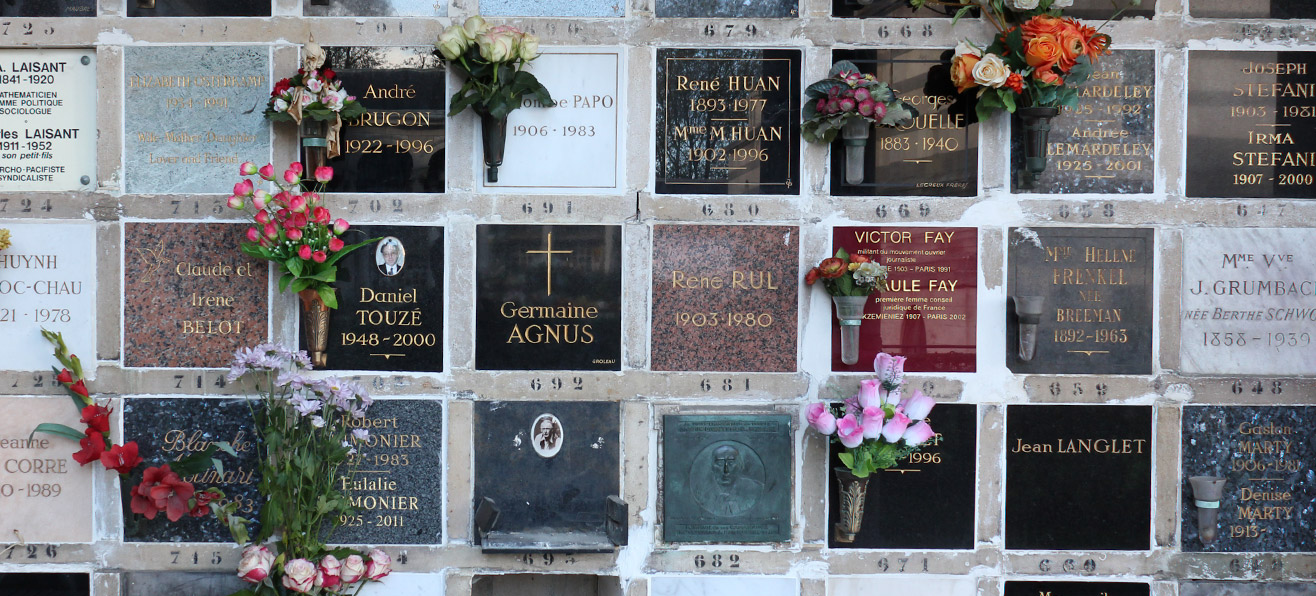
Diocesan Policy Regarding the Disposition of Cremated Remains
In the face of death, the Church confidently proclaims that God has created each person for eternal life and that Jesus, the Son of God, by his death and resurrection, has broken the chains of sin and death that bound humanity. Christ “achieved his task of redeeming humanity and giving perfect glory to God, principally by the paschal mystery of his blessed passion, resurrection from the dead, and glorious ascension”.
From the Order of Christian Funerals, n. 1.
From the earliest days of the Church, Christians have provided reverent burial for the bodies of deceased members of the Christian community. The Catholic Cemetery became the tangible link between the community of the faithful on earth and the community of Saints in heaven. In the latter part of the nineteenth century, the practice of cremation was introduced in Europe. Realizing that the motives of many choosing cremation were anti-Christian, the Church prohibited cremation for Catholics in 1886.
Cremation as such was never seen as incompatible with Catholic doctrine. However, it was the preference of the Church for bodies to be buried to await the Resurrection on the last day, as Christ himself was laid in a tomb (see Mark 15:46). Once it was established that the choice of cremation was not motivated by a denial of the resurrection of the body, the Catholic Church, in 1963, lifted the prohibition.
Given the growing acceptance of cremation among Catholics, it is important to reiterate the teaching about Catholic Funeral Rites and the subsequent disposition of the cremated remains.
It remains the preference of the Church to celebrate the Funeral Rites in the presence of the body of the deceased, which the Church considers to be sacred, having been baptized, having been a temple of the Holy Spirit and having shared in the Eucharistic banquet. Traditionally, the rites include the Vigil for the Deceased, the Funeral Mass or Liturgy, concluding with the Rite of Commendation, and finally the Rite of Committal, when the body of the deceased is reverently buried in a grave or entombed in a mausoleum. Furthermore, the Church prefers that if cremation is chosen as a means of disposition, this takes place following the Funeral Mass or Liturgy.
Notwithstanding the canonical preference for burial, in the Diocese of Hamilton it is permitted to celebrate Funeral Rites in the presence of cremated remains, which have been placed in a dignified container (see indult from the Congregation for Divine Worship prot. no. 99/18, December 3, 1984). At the conclusion of the Funeral Rites, the cremated remains should be reverently buried in a grave or placed in a mausoleum or columbarium as soon as conveniently possible and not retained for any length of time in the family home. The interment of the bodies of deceased Catholics or their cremated remains should be in a place especially designated for this purpose and reserved as such.
The practice of scattering cremated remains or keeping them at home does not display appropriate reverence for what was the temple of the Holy Spirit. Neither does dividing the remains among family members or placing portions of the remains in items of jewellery to be kept by family members show the reverence due to cremated remains. Such practices are not in keeping with our Catholic faith.
The Church is aware that pastors face many challenging pastoral situations relating to the death of an individual. However, Church teaching makes clear the necessity of treating the cremated remains in the same manner as the deceased human body. It is for this reason that the Church does not celebrate the committal rites when the method of disposition chosen is not in accord with Church teaching.
April 26, 2014
Most Reverend Douglas Crosby, OMI
Bishop of Hamilton
